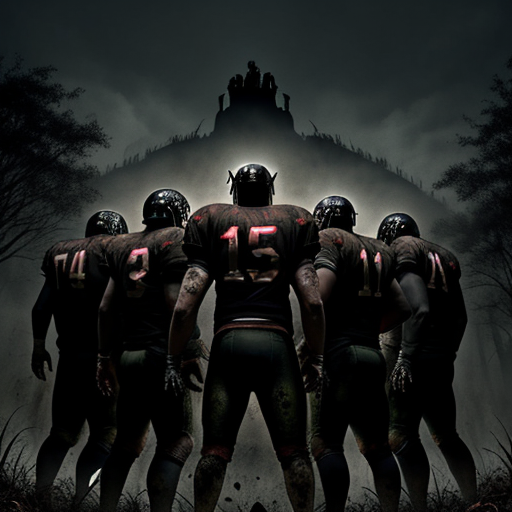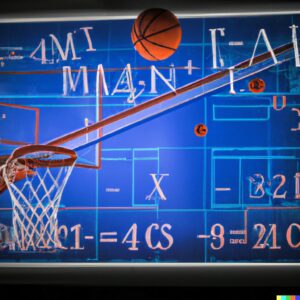The Week 3 slate features numerous changes with several significant absences, including a few young quarterbacks missing games early in their careers and several lingering injuries for key skill players. The recommended groups below have been designed following our projections with the idea of capturing the most likely correlated scoring potential from each team stack, they can be used with any industry optimizer with the same basic settings. All injury news through Friday night has been accounted for in the groups below, they will be updated again going into Sunday morning with the latest available information and any recommended boosts to players for additional or reduced exposure. This week’s rule set eliminates the required run-back play from many of the opposing teams, opting instead to simply allow for the possibility. Certain optimizers will allow for a percentage of lineups to be allocated to certain constructions, including utilizing a run-back play, via the Stacks tab to enhance the possibility of getting the construction if desired.
This article focuses on building lineups with a quality foundation by utilizing the powerful Groups and Rules/Limits tools within the industry’s optimization tools. All of the concepts and pairings included below can be applied to hand-building as well. The goal is to create lineups that have high-scoring correlation and take advantage of combined outcomes within stacks while limiting the likelihood of building inefficient or negatively correlated entries for a full slate of NFL DFS lineups.
This video was made in a former life and features a detailed demonstration of how to apply these concepts in one leading optimizer tool: Fantasy Cruncher – How-To Video
Don’t miss the new Above/Below feature article for a few of our top picks.
Join us at 6pm ET on Saturday for the full game-by-game breakdown live, or catch up before lock right here:
Week 3 DraftKings & FanDuel NFL DFS Stack Rankings – New!
The following stack rankings were created by pairing each team quarterback with his top three scoring options, whether they are three wide receivers, two wide receivers and a tight end, a wide receiver, tight end, and running back, or any viable combination. In some cases, an expensive running back, such as Tony Pollard, can push the overall price point of his team stack in the value rankings.
| TEAM | OPP | FD$ | FDpRank | FDvalRank | DK$ | DkpRank | DKvalRank |
|---|---|---|---|---|---|---|---|
| HOU | JAC | $30,500 | 1 | 1 | $27,600 | 1 | 4 |
| CIN | CAR | $31,300 | 2 | 8 | $26,100 | 2 | 3 |
| ARI | WAS | $29,700 | 3 | 3 | $25,000 | 3 | 1 |
| PHI | TB | $31,600 | 4 | 16 | $25,300 | 5 | 5 |
| SF | NE | $31,600 | 5 | 17 | $26,200 | 6 | 12 |
| MIN | GB | $30,100 | 6 | 12 | $25,900 | 4 | 7 |
| BAL | BUF | $30,000 | 7 | 14 | $0 | 0 | 0 |
| NYJ | DEN | $28,800 | 8 | 5 | $25,200 | 7 | 6 |
| BUF | BAL | $29,100 | 9 | 6 | $0 | 0 | 0 |
| KC | LAC | $29,000 | 10 | 7 | $25,600 | 9 | 14 |
| NO | ATL | $29,200 | 11 | 11 | $25,500 | 8 | 10 |
| WAS | ARI | $26,900 | 12 | 4 | $22,200 | 13 | 2 |
| GB | MIN | $26,200 | 13 | 2 | $23,600 | 12 | 8 |
| TB | PHI | $28,900 | 14 | 19 | $26,200 | 10 | 19 |
| ATL | NO | $27,700 | 15 | 15 | $23,800 | 11 | 9 |
| CLE | LV | $25,400 | 16 | 10 | $22,600 | 16 | 13 |
| IND | PIT | $27,100 | 17 | 21 | $24,400 | 15 | 20 |
| JAC | HOU | $25,500 | 18 | 13 | $23,300 | 14 | 16 |
| CHI | LAR | $26,200 | 19 | 20 | $23,600 | 17 | 18 |
| LAR | CHI | $26,100 | 20 | 23 | $22,800 | 20 | 22 |
| LV | CLE | $23,900 | 21 | 9 | $21,600 | 18 | 15 |
| PIT | IND | $24,500 | 22 | 18 | $20,700 | 19 | 11 |
| CAR | CIN | $24,900 | 23 | 22 | $21,400 | 21 | 17 |
| LAC | KC | $25,700 | 24 | 26 | $21,500 | 22 | 24 |
| DEN | NYJ | $22,800 | 25 | 24 | $19,900 | 23 | 21 |
| NE | SF | $23,600 | 26 | 25 | $19,900 | 24 | 23 |
Week 3 DraftKings & FanDuel NFL DFS Stacks & Optimizer Groups
Overview
Rules and limits are powerful tools for lineup creation for NFL DFS where our primary focus is creating highly correlated lineups via stacking players from the same game. Lineups will typically be coordinated around the quarterback selection, which informs at least one pass-catcher choice, establishes a budget, eliminates a defense, and sets the tone for the lineup. We will typically look to correlate a quarterback and at least one of his pass-catchers in every lineup, with most of those including a skill player from the opposing team who will have a chance to support the stack in a high-scoring game that drives offense on both sides to create additional correlated scoring potential. Stacking multiple pass-catchers in the same lineup is a sound approach as well, though there are typically overall ceilings on how much volume is available at any given position. We do not typically include running backs who are not pass-catchers as priorities in NFL DFS groups, they typically stand alone with the selection of the quarterback-based stack informing remaining salary which then informs the running back selections. High-volume backs and pass catchers out of the backfield can be included in the groups utilized below, but it is frequently not necessary to do so with the very best players, they arrive in lineups without help.
The following rules and limits are typically applied in an optimizer’s Advanced Options menu. Notes are included to elucidate the reasons behind each rule and to explain what it does during the lineup creation process. These settings can typically be saved for re-use, which is highly recommended. Saving the Week 1 groups that will be created below is also a very good idea to save time with updates instead of recreation each week. These groups are created manually, but most optimizers include automated group creators that can help accelerate the curation process.
DraftKings + FanDuel Settings & Advanced Options
Unique Players Per Lineup– This setting forces the optimizer to utilize at least X new players who were not in Lineup 1 when it creates Lineup 2, and so on. It is recommended to utilize at least two, and more can be applied depending on the degree of differentiation desired within lineups.
Team Salary– a minimum or maximum salary spend can be applied here as needed, though this is not a part of the recommended process in this space as leaving salary on the table is an easy path toward creating unique lineups while not necessarily making a negative expected value play.
FLEX position– allows restrictions on what positions can be rostered at the FLEX spot. The only position to consider in this case is tight end, but that is something to be restricted at the individual level via Groups, rather than at the global level.
Global Exposure Setting – allows caps on the maximum percentage of lineups a player can appear in within a given pool of lineup construction. This is a powerful tool for shaping lineups but if settings are too low attempts to build a full set will fall short due to a lack of available players, one of the most common errors in optimizer building. Most optimizers include the ability to calculate ownership caps continuously or at the end of the pool creation process. If caps are calculated continuously, a player with a 25% cap who is utilized in Lineup 1 will not be available for use again until Lineup 5 , we recommend turning OFF continuous calculation.
Randomness – provides a random multiplier to each player’s projected point total based on the set values. This is a valuable tool that helps differentiate lineups instead of simply creating them in order of highest median projected scores. Using some randomness for lineup generation is strongly recommended but the degree to which it is applied is down to personal preference, but 15-25% is fine to get started. We suggest heavier randomness to more event-based players like wide receivers while tracking volume-based positions like running backs more toward their median or ceiling projections.
DraftKings + FanDuel Team Stack Rules
This set of rules will force optimizers to build lineups with certain combinations. We are looking to stack at least one skill player, almost always a pass-catcher, with his quarterback while also playing a skill player from the opposing team in the lineup. The theory behind this build is that a high-scoring stack will require some response from the opposing team to deliver a ceiling score in most situations. When that is not the case, the team that is winning will simply slow down and run out the clock. Most optimizers utilize a “complete the sentence” approach for rule creation with selections from drop-down menus following a very straightforward logic. Exceptions to these rules can be added for specific teams and players on most optimizer products.
- QB with at least one WR/TE from Same Team (note: It is fine to set this to two or to utilize two versions of this rule, one with WR/TE and one with RB/WR/TE, but we refine this via Groups)
- QB with at least one RB/WR/TE from the Opposing Team (we typically prefer the pass-catchers but high-volume running backs can be effective here)
- QB with at most zero DST from the Same Team (this is a personal preference; high-scoring teams and quarterbacks tend to leave their defenses on the field, exposing them to simple point-scoring negatives)
Limits & Custom Rules and Requirements
Limit rules can be applied to restrict certain combinations from coming together. This is powerful for limiting multiple running backs from the same team or getting overweight to a certain stack within a lineup.
- Limit QB/RB/WR/TE from Same Team to three
- Limit RB/WR/TE from the Same Team to one unless paired with QB from the Same Team OR the Opposing Team
- Limit RB from Same Team to one (we also do this with WR in a separate rule that adds an “unless paired with QB or opposing QB” but it’s a personal preference for NFL DFS, we typically do not want two pass-catchers from the same team without their quarterback)
We will maintain the list of rules and limits throughout the season, with occasional tweaks, if needed. Each week sees yet another fresh crop of value plays as situations change and injuries create opportunities around the league. These changing roles and emergent value plays are accounted for in the process of creating these groups from week to week. After a large pool of lineups is created utilizing these groups, it is still of critical importance to filter them for factors including ceiling projections and leverage potential. These groups should help ensure that a highly correlated premium set of options that rotates through a variety of combinations is utilized to create the full lineup pool.
Sunday Updates
Any changes and recommended boosts to specific players will be provided in an early morning update each Sunday.
NFL DFS Week 2 Features & FREE Projections
- Week 3 FanDuel & DraftKings Projections
- Week 3 Above/Below – Key Picks
- Week 3 Quarterback Scoring & Value Rankings
- Week 3 Running Back Scoring & Value Rankings
- Week 3 Pass-Catcher Scoring & Value Rankings
- Week 3 Defense Scoring & Value Rankings
Construction Concept
Team groups are built by utilizing the quarterback as the KEY player in group settings. The quarterback decision in each lineup is the driving factor in which stack is utilized in that lineup and which corresponding plays are then made to work within the structure and requirements. Built to specification, each team will have two groups, a team group, and an opponent group, both of which utilize the same quarterback as the key player. Each game will have a total of four groups. This is the best approach to truly capture the requirement of playing individual “run-back” plays from the opposing team. A more basic approach would be to include all of the skill players from a game in each quarterback’s group and rely on rules and limits to restrict any potential overflow. It is highly recommended to save the Week 1 groups as a foundation that will be updated for the rest of the season. The recommended groups will include skill players who have an active role in their offense and provide significant correlation with their quarterback’s scoring, quite often bell-cow running backs who do not specialize in the passing game will not be included in groups as they are projected highly and appear on their own in basically correct distributions, while also not always providing the strongest positive correlation plays. Stacking quarterbacks with pass-catchers and allowing running backs to fall into the lanes then created by settings, available salary, and randomness should create a well-distributed set of quality lineups. These groups are updated weekly to account for changes in utilization, schemes, injuries, target shares, and more.
Team Groups for DraftKings & FanDuel – Week 3
The goal is to create a large pool of well-built lineups that can be utilized in any large-field GPP contest. Our approach is to build far more lineups than needed and utilize a sorting table or sim process to filter to the best set of lineups for entries. The lineups created in these crunches should provide a broad distribution that includes some of the lower-owned high-upside skill players from each stack. Applying boosts is critical in pushing and pulling ownership on individual players within their team’s stacked lineups if they are appearing too much or too little.
The groups below are designed so that each quarterback will have two groups to create, one with his skill players and another with the opposing team. A more basic approach would be to add them all to one large group with an “at least three” and let rules and limits set things, but there is a more granular level of control in creating them separately.
Utilizing two groups also allows us to place running backs into the “run-back” position in certain teams while not including them in the primary stack for their team. This is useful when there is a situation with an extremely highly projected running back who does not necessarily fit into his team’s passing game. These players are threaded throughout the following construction recommendations.
Note for the Rotogrinders optimizer, we recommend trimming the automatically created groups that can be accessed under Team Groups, Opponent Groups, and Max Position Groups to match these groups for lineup building. We typically utilize the Stacks tab to enforce constructions as well, but a key requirement is missed in the automated groups. The Max Position groups need the manual addition of the running backs and tight ends to the group that is created with the wide receivers with a setting of max 1 and the team’s quarterback selected as a key player with the designation of using that group when the quarterback is NOT in the lineup. This is done to eliminate the possibility of three skill players from the same team appearing at running back, tight end, and wide receiver together without their quarterback involved. A simple limit of three players per team will keep things to just a quarterback with two skill players in stacks after that. Update: if one were to reset their saved settings on RG’s optimizer new options will reveal themselves, including thankfully a toggle to take care of this from the main build rules page. There is also a non-QB groups with a max-1 setting that works better for this purpose because the toggle on the main page will limit stacks to just a 1-1 combination, seemingly as a bug.
We are pulling back from the requirement for run-back plays in several places and leaving it to an “at most” rule for several opposing teams in stacks for Week 3.
Arizona Cardinals
Key Player: Joshua Dobbs
Setting: exactly one
Team Group: James Conner, Marquise Brown, Rondale Moore, Zach Ertz, Michael Wilson, Trey McBride
Opposing Setting: at most one
Opposing Group: Tony Pollard, CeeDee Lamb, Brandin Cooks, Michael Gallup, Jake Ferguson
Lineup Notes: Conner can join or be left out of this group depending on how one feels about stacking running backs, he is involved in the passing game with three targets per game in 2023). It is fine to remove Tony Pollard from the opposing group or give him several bumps downward if he comes up as the run-back option too frequently, we want him but not as the only option. The Cowboys are an excellent option on this slate overall.
Atlanta Falcons
Key Player: Desmond Ridder
Setting: exactly one
Team Group: Bijan Robinson, Drake London, Kyle Pitts, Mack Hollins
Opposing Setting: at most one
Opposing Group: Amon-Ra St. Brown (Q), Josh Reynolds (Q), Sam LaPorta, Kalif Raymond, Marvin Jones Jr.
Lineup Notes: Atlanta is a somewhat limited/focused group with high-ceiling skill players in a game with a good point total but individual shots in the running game may be the most appealing approach. For Detroit, St. Brown seems likely to play, he practiced fully on Friday. Reynolds seems more up in the air, Raymond and Jones would get a bump if either sits.
Baltimore Ravens
Key Player: Lamar Jackson
Setting: at most one
Team Group: Mark Andrews, Zay Flowers, Rashod Bateman, Nelson Agholor
Opposing Setting: at most one
Opposing Group: Michael Pittman Jr., Kylen Granson, Josh Downs, Alec Pierce
Lineup Notes: Mark Andrews may need a bump to surpass Kelce shares in Ravens stacks, depending on how thinly ownership is capped, Andrews is worth getting to in a fair portion of Ravens stacks, he and Zay Flowers are easily the top two options in the passing attack today. The Colts are limited, Pittman is easily the top option for a run-back play and even he does not come up frequently as a run-back unless forced.
Buffalo Bills
Key Player: Josh Allen
Setting: at least one
Team Group: Stefon Diggs, Gabe Davis, Dalton Kincaid, Dawson Knox, Deonte Harty
Opposing Setting: at most one
Opposing Group: Brian Robinson Jr., Terry McLaurin, Jahan Dotson, Curtis Samuel
Lineup Notes: Running back James Cook should land in a handful of Buffalo stacks without being added to the group, if he is included he tends to come up too much for our tastes. Washington only provides limited run-back shares, make them an “exactly” selection if you prefer to have both sides of any game stack.
Carolina Panthers
Key Player: Andy Dalton (Bryce Young will miss Week 3)
Setting: exactly one
Team Group: DJ Chark Jr., Adam Thielen, Jonathan Mingo, Hayden Hurst
Opposing Setting: at most one
Opposing Group: DK Metcalf (Q), Tyler Lockett, Jaxon Smith-Njigba, Noah Fant
Chicago Bears
Key Player: Justin Fields
Setting: at least one
Team Group: DJ Moore, Darnell Mooney, Cole Kmet, Chase Claypool
Opposing Setting: at most one
Opposing Group: Travis Kelce, Jerick McKinnon, Skyy Moore, Kadarius Toney, Marquez Valdes-Scantling, Rashee Rice, Justin Watson
Cleveland Browns
Key Player: Deshaun Watson
Setting: at least one
Team Group: Amari Cooper, Elijah Moore, David Njoku, Donovan Peoples-Jones, Kareem Hunt
Opposing Setting: at most one
Opposing Group: Derrick Henry, DeAndre Hopkins, Treylon Burks, Chig Okonkwo
Lineup Notes: These stacks arrive fairly naturally, we are high on Derrick Henry this week.
Dallas Cowboys
Key Player: Dak Prescott
Setting: at least one
Team Group: Tony Pollard, CeeDee Lamb, Brandin Cooks, Michael Gallup, Jake Ferguson (nudge+)
Opposing Setting: at most one
Opposing Group: James Conner, Marquise Brown, Rondale Moore, Zach Ertz (we are keeping this to the team’s featured pass-catchers, Trey McBride and Michael Wilson can be added if desired)
Lineup Notes: Ferguson is a strong option at tight end this week, he has seen seven red zone targets in the team’s two games with one receiving touchdown on 17.7% of the target volume. Cooks and Gallup are also projected ahead of the industry average. Pollard is our RB1 across the board, he belongs in stacks with his involvement in all aspects of the offense. Lamb is a premium wide receiver, and Dak Prescott is a leading quarterback option in our model.
Denver Broncos
Key Player: Russell Wilson
Setting: at least one
Team Group: Jerry Jeudy, Courtland Sutton, Marvin Mims Jr., Brandon Johnson, Lil’Jordan Humphrey
Opposing Setting: at most one
Opposing Group: Tyreek Hill, Raheem Mostert, Braxton Berrios, Durham Smythe, River Cracraft
Lineup Notes: Some Javonte Williams should arrive naturally outside of the groups, the rest of these stacks should fall fairly easily, Jerry Jeudy may need a minor bump upward to ensure appropriate distributions. The lower depth chart options in the Miami passing game could take minor upward nudges to ensure shares in large builds. We should receive an abundance of Tyreek Hill.
Detroit Lions
Key Player: Jared Goff
Setting: at least one
Team Group: Amon-Ra St. Brown (Q), Josh Reynolds (Q), Sam LaPorta, Kalif Raymond, Marvin Jones Jr.
Opposing Setting: at most one
Opposing Group: Bijan Robinson, Drake London, Kyle Pitts, Mack Hollins
Lineup Notes: For Detroit, St. Brown seems likely to play, he practiced fully on Friday. Reynolds seems more up in the air, Raymond and Jones would get a bump if either sits. Atlanta is a somewhat limited/focused group with high-ceiling skill players in a game with a good point total but individual shots in the running game may be the most appealing approach. The Falcons could take a bit of an upward bump across the board to ensure a few run-back opportunities in this stack.
Green Bay Packers
Key Player: Jordan Love
Setting: exactly one
Team Group: Aaron Jones (Q), Christian Watson (Q), Luke Musgrave, Romeo Doubs, Jayden Reed
Opposing Setting: at most one
Opposing Group: Chris Olave, Rashid Shaheed, Michael Thomas, Juwan Johnson
Notes: we are still waiting on the updates on key Green Bay players but this is a low-priority stack against the New Orleans pass defense in general.
Houston Texans
Key Player: CJ Stroud
Setting: at least one
Team Group: Nico Collins, Tank Dell, Robert Woods, Dalton Schultz
Opposing Setting: at most one
Opposing Group: Travis Etienne Jr., Calvin Ridley, Christian Kirk, Evan Engram, Jamal Agnew
Lineup Notes: This is a potentially under-appreciated game on both sides, both teams are playing with pace and the Texans have shown enough weapons to stay in the game early and make a bit of a shootout of things. We are prioritizing Jaguars stacks with the Texans providing good run-back options and viable stacks of their own. Agnew and Schultz can both take bumps in this setup to ensure shares.
Indianapolis Colts
Key Player: Gardner Minshew II (Anthony Richardson is out for Week 3)
Setting: exactly one
Team Group: Michael Pittman Jr., Kylen Granson, Josh Downs, Alec Pierce
Opposing Setting: at most one
Opposing Group: Mark Andrews, Zay Flowers, Rashod Bateman, Nelson Agholor
Lineup Notes: this is a very low-priority stack, Pittman is probably better independently as a one-off or in run-back situations in Lamar Jackson-Ravens stacks.
Jacksonville Jaguars
Key Player: Trevor Lawrence
Setting: at least one
Team Group: Travis Etienne Jr., Calvin Ridley, Christian Kirk, Evan Engram, Jamal Agnew
Opposing Setting: at most one
Opposing Group: Nico Collins, Tank Dell, Robert Woods, Dalton Schultz
Lineup Notes: This is a potentially under-appreciated game on both sides, we are prioritizing Jaguars stacks with the Texans providing good run-back options and viable stacks of their own.
Kansas City Chiefs
Key Player: Patrick Mahomes
Setting: at least one
Team Group: Travis Kelce, Skyy Moore, Kadarius Toney, Marquez Valdes-Scantling, Jerick McKinnon, Rashee Rice, Justin Watson
Opposing Setting: at most one
Opposing Group: DJ Moore, Darnell Mooney, Cole Kmet, Chase Claypool
Notes: This lineup should land many Kelce shares and a mix of everyone else on the Kansas City side. Kadarius Toney is confirmed as active, Kansas City has been spreading the ball around to all of their receivers in limited doses. Rice and Watson are more very large-field options.
Los Angeles Chargers
Key Player: Justin Herbert
Setting: at least one
Team Group: Keenan Allen, Mike Williams, Quentin Johnston, Gerald Everett, Joshua Palmer
Opposing Setting: at least one
Opposing Group: Justin Jefferson, TJ Hockenson, Jordan Addison, KJ Osborn, Alexander Mattison
Lineup Notes: Both stacks for these teams fall naturally, they are extremely highly projected and they should be very popular. Pressing up the Addison, Osborn, Johnston, Palmer options to some degree in stacks is recommended for differentiation within team builds.
Miami Dolphins
Key Player: Tua Tagovailoa
Setting: at least one
Team Group: Tyreek Hill, Braxton Berrios, Durham Smythe, River Cracraft, Erik Ezukanma
Opposing Setting: at most one
Opposing Group: Jerry Jeudy, Courtland Sutton, Marvin Mims Jr., Brandon Johnson, Lil’Jordan Humphrey
Minnesota Vikings
Key Player: Kirk Cousins
Setting: at least one
Team Group: Justin Jefferson, TJ Hockenson, Jordan Addison, KJ Osborn, Alexander Mattison
Opposing Setting: at least one
Opposing Group: Keenan Allen, Mike Williams, Quentin Johnston, Gerald Everett, Joshua Palmer
Lineup Notes: Both stacks for these teams fall naturally, they are extremely highly projected and they should be very popular. Pressing up the Addison, Osborn, Johnston, Palmer options to some degree in stacks is recommended for differentiation within team builds.
New England Patriots
Key Player: Mac Jones
Setting: exactly one
Team Group: DeVante Parker (Q), Kendrick Bourne, JuJu Smith-Schuster, Hunter Henry
Opposing Setting: at most one
Opposing Group: Garrett Wilson, Breece Hall, Allen Lazard, Tyler Conklin
New Orleans Saints
Key Player: Derek Carr
Setting: at least one
Team Group: Chris Olave, Rashid Shaheed, Michael Thomas, Juwan Johnson
Opposing Setting: at most one
Opposing Group: Aaron Jones (Q), Christian Watson (Q), Luke Musgrave, Romeo Doubs, Jayden Reed
Lineup Notes: this whole stack could use a minor nudge upward in our numbers on the New Orleans side, only limited shares of the key Packers options, if they play, should be used in run-backs.
New York Jets
Key Player: Zach Wilson
Setting: exactly one
Team Group: Garrett Wilson, Breece Hall, Allen Lazard, Tyler Conklin, Dalvin Cook
Opposing Setting: at most one
Opposing Group: DeVante Parker (Q), Kendrick Bourne, JuJu Smith-Schuster, Hunter Henry
Seattle Seahawks
Key Player: Geno Smith
Setting: at least one
Team Group: DK Metcalf (Q), Tyler Lockett, Jaxon Smith-Njigba, Noah Fant
Opposing Setting: at most one
Opposing Group: DJ Chark Jr., Adam Thielen, Jonathan Mingo, Hayden Hurst
Lineup Notes: Metcalf may need a minor bump to ensure appropriate shares (assuming he plays).
Tennessee Titans
Key Player: Ryan Tannehill
Setting: at least one
Team Group: DeAndre Hopkins (Q), Treylon Burks, Derrick Henry, Chig Okonkwo, Nick Westbrook-Ikhine
Opposing Setting: at most one
Opposing Group: Amari Cooper, Elijah Moore, David Njoku, Donovan Peoples-Jones, Kareem Hunt
Washington Commanders
Key Player: Sam Howell
Setting: at least one
Team Group: Brian Robinson Jr., Terry McLaurin, Jahan Dotson, Curtis Samuel, John Bates, Antonio Gibson
Opposing Setting: at most one
Opposing Group: Stefon Diggs, Gabe Davis, Dalton Kincaid, Dawson Knox, Deonte Harty
Follow Us on Twitter. Join us in Discord. Subscribe to the YouTube Channel.






